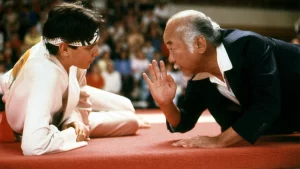Karate is a martial art that has a rich history and a deep cultural significance. The word “Karate” translates to “empty hand” and refers to the use of one’s own body as a weapon. The origins of Karate can be traced back to the Ryukyu Islands, which are now part of modern-day Okinawa, Japan. The martial art was developed by the island’s inhabitants as a means of self-defense against invaders.
The history of Karate is closely tied to the history of Okinawa. The Ryukyu Islands were once an independent kingdom, but were eventually conquered by the Satsuma clan of Japan in the 17th century. The Satsuma clan imposed strict regulations on the islanders, including a ban on weapons. In response, the islanders developed a form of unarmed combat known as “te” (hand) or “to-de” (Chinese hand). This martial art eventually evolved into what is now known as Karate.
Karate was kept secret for many years, passed down only within certain families and schools. It was not until the early 20th century that Karate was introduced to mainland Japan. The first Karate dojo was opened in Tokyo in 1917 by Gichin Funakoshi, who is considered the “father of modern Karate.” Funakoshi introduced the martial art to the Japanese public and began to adapt the techniques to make them more suitable for sport and competition.
In the following years, Karate rapidly gained popularity in Japan and eventually spread to other countries. In 1960, the International Karate Organization was formed, and Karate was officially recognized as a sport by the Japanese government. In 1975, Karate was included as a demonstration sport at the World Games, and in 1988, it became a full-medal sport at the Pan American Games.
Today, Karate is widely recognized as a sport and is practiced all over the world. There are different styles of Karate, each with their own unique techniques and philosophies. The most popular styles include Shotokan, Goju-ryu, and Shito-ryu. Karate training typically includes three main components: kihon (basics), kata (formal exercises), and kumite (sparring). Kihon focuses on mastering the basic techniques such as strikes, kicks, and blocks. Kata is a set of pre-arranged movements that simulate self-defense against multiple opponents. Kumite is sparring, where students can apply the techniques they have learned in a controlled, competitive environment.
In addition to its evolution as a sport, Karate has also evolved in terms of its philosophy and purpose. In its early days, Karate was primarily a form of self-defense, but today, it is also seen as a way to improve physical fitness, mental focus, and overall well-being. Many Karate practitioners also focus on the spiritual and philosophical aspects of the martial art, such as humility, respect, and self-discipline.
In conclusion, the history and evolution of Karate is a fascinating one, rooted in the cultural and political history of Okinawa and shaped by the contributions of many dedicated practitioners. From its humble beginnings as a form of self-defense, Karate has grown to become a widely recognized and respected sport, as well as a powerful tool for personal growth and development. Whether you’re a beginner or a seasoned practitioner, Karate is a discipline that offers something for everyone, and its history and evolution is a testament to its enduring appeal and relevance.



